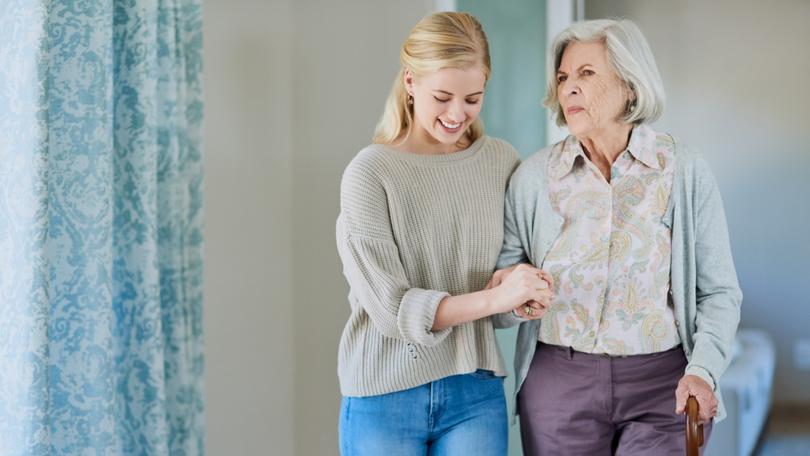Nick Bruining: Why selling the family home to fund aged care may cost you a Centrelink pension

It’s a tough decision that’s often made in a hospital carpark.
Mum’s been admitted following a bad fall and the clinical advice is that she now needs full-time care. That means returning to her home is no longer an option.
It’s confronting to realise that probability and statistics can play a big part in what happens next. The reality is that no-one plans to spend their last days in an old people’s home.
Sign up to The Nightly's newsletters.
Get the first look at the digital newspaper, curated daily stories and breaking headlines delivered to your inbox.
By continuing you agree to our Terms and Privacy Policy.Over the past 35 years, I can assure you that almost everyone I’ve spoken to plans to leave their home “horizontally . . . and straight into the back of the unmarked white van”.
The truth is that for many — and with the escalating availability of in-home aged care packages — that option is now more realistic than it’s ever been. And that ignores what voluntary assisted dying might look like in the future.
It’s a stark number from the Aged Care Industry Association but statistically, an average stay of 11 months in aged care means families have to make some particularly tough and tactical financial decisions.
The natural inclination might be to sell up everything, including the family home, then use the proceeds to fund the refundable accommodation deposit and ensure mum enjoys the best experience possible.
No one’s denying the importance of mum’s experience, but the reality is this approach can really stuff up the finances, not only for her but possibly for her beneficiaries when she dies.
Too few families properly weigh up the benefits of going down the path of opting for the Daily Accommodation Payment.
For starters, selling the family home means you can probably kiss goodbye to a Centrelink age pension.
Aged care rules are not the same as the Centrelink rules.
The family home is exempt from Centrelink asset-testing for two years after someone moves into an aged care facility. That means their home could be retained while receiving an age pension to help pay for the daily care costs.
Sell the family home and any money left over is means-tested. That could end up blowing the Centrelink pension right out of the water.
Similarly, selling shares and other assets might well give rise to significant capital gains tax liabilities.
Were those assets retained — perhaps with only some sold to meet the daily costs — that tax could be deferred to what might be a better time to liquidate. That includes transferring the remaining assets directly to the beneficiaries when she dies.
The DAP system sees the RAD — less any lump-sum payments made — multiplied by a government set interest rate, changing quarterly. From October until the end of December this year, the DAP rate will be 8.38 per cent a year. Once you flick the switch and move into aged care, your DAP rate stays fixed while you stay there.
Let’s say the RAD is $550,000 and you stump up $50,000. The unpaid RAD of $500,000 attracts the DAP interest rate of 8.38 per cent, giving an annual total of $41,900 a year. That’s divided by 365, to give you a DAP of $114.79 a day.
Now, you can either pay the monthly total or choose to have this erode the $50,000 amount initially contributed. In this example, the $50,000 RAD contribution would need to be replenished once a year goes by but, of course, as each monthly payment comes out, the DAP will be going up.
The analysis becomes a rather ugly exercise comparing mum’s total net financial position now to how long the DAP funding will need to be in place.
And while the government may have made the funding system better and sustainable in the long term, it certainly hasn’t made things any easier to navigate.
It’s why specialist aged care financial planners will never be out of work.
Nick Bruining is an independent financial adviser and a member of the Certified Independent Financial Advisers Association
Originally published as Nick Bruining: Why selling the family home to fund aged care may cost you a Centrelink pension

